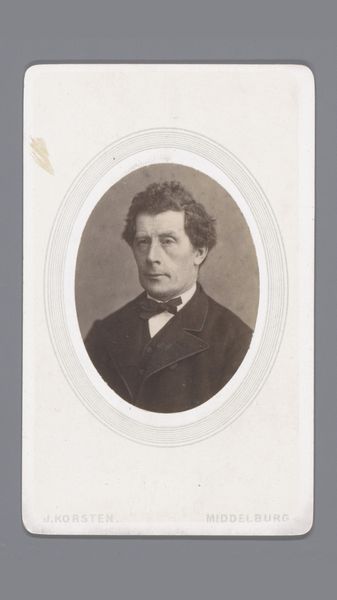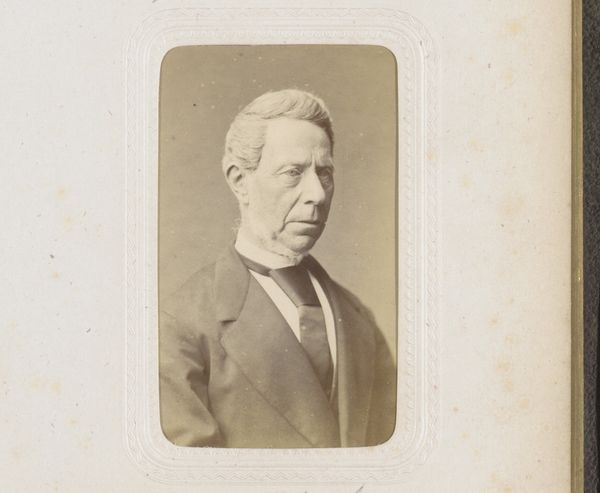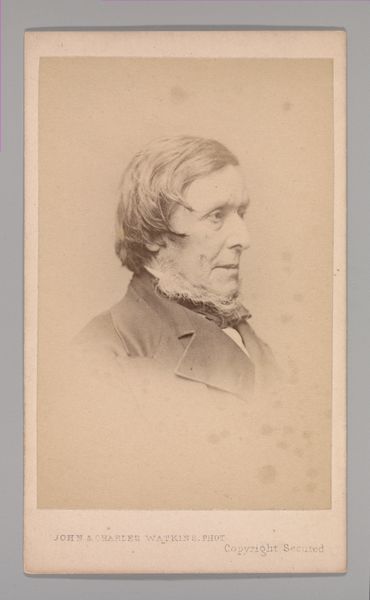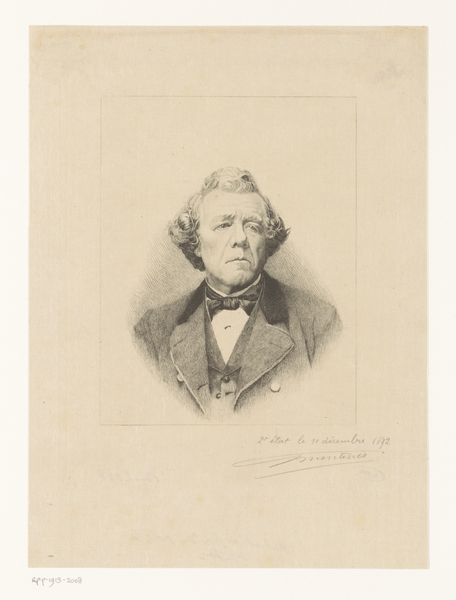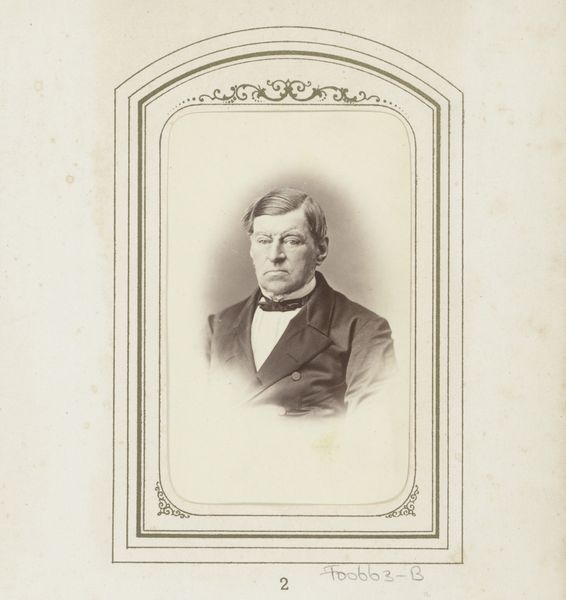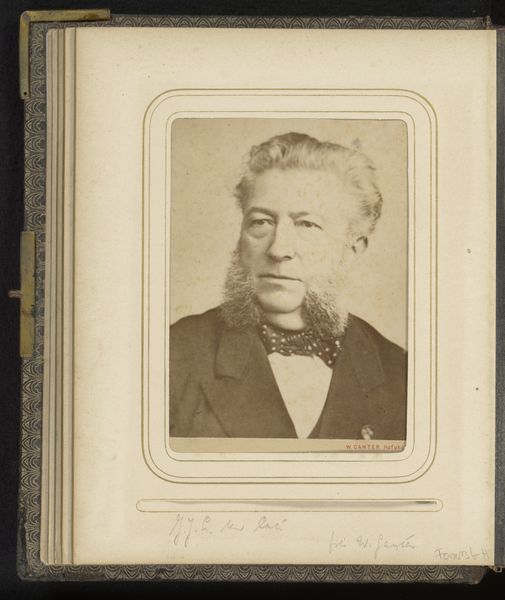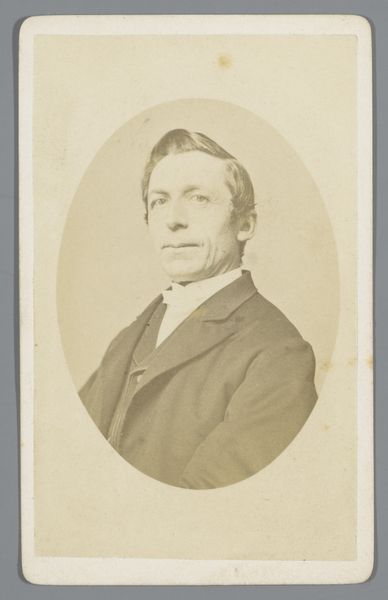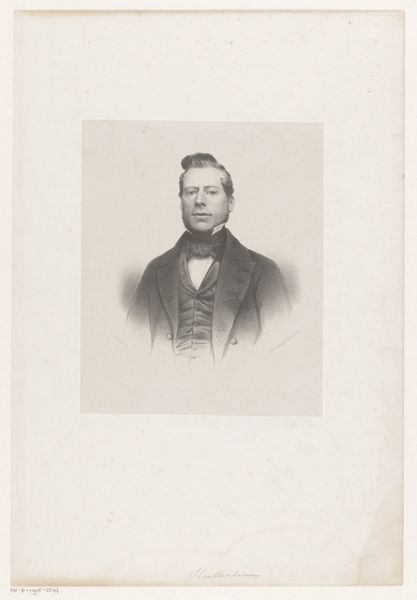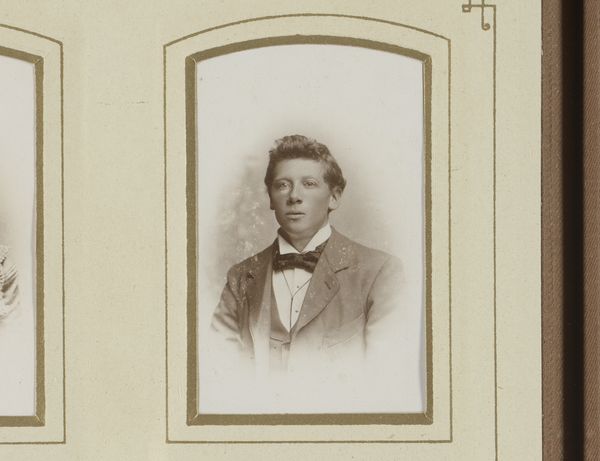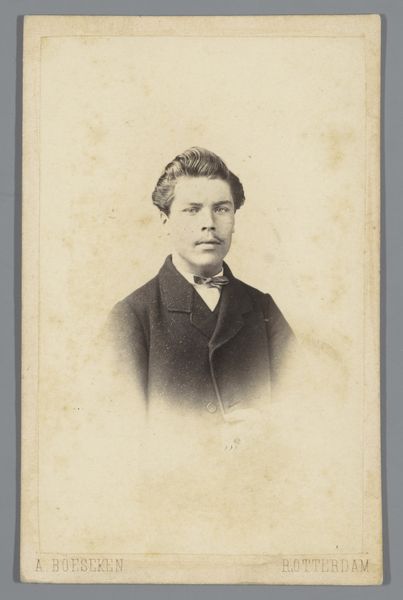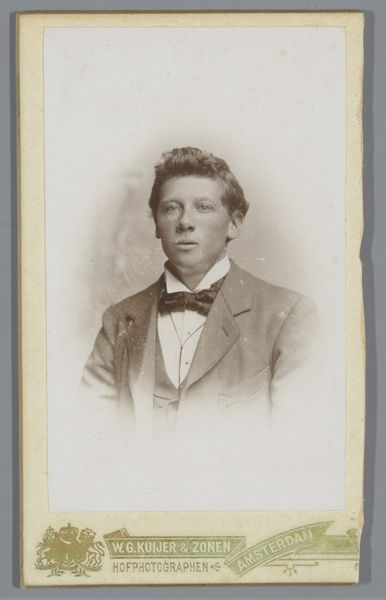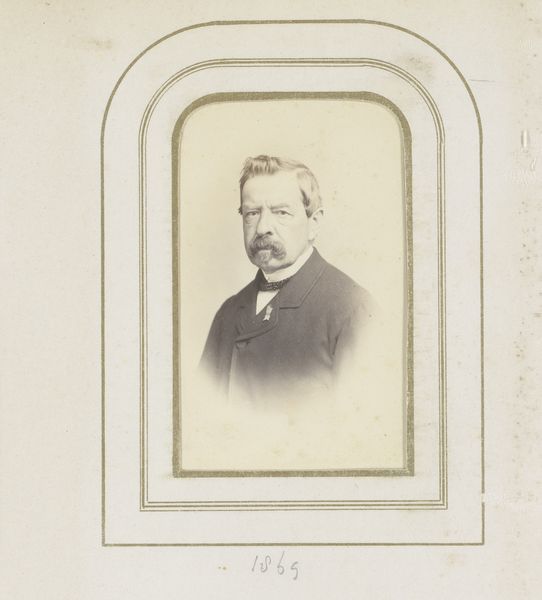
photography, gelatin-silver-print
#
portrait
#
photography
#
historical photography
#
gelatin-silver-print
#
realism
Dimensions: height 134 mm, width 93 mm, height 186 mm, width 114 mm
Copyright: Rijks Museum: Open Domain
Editor: Here we have "Portret van Pieter Hendrik Suringar," a gelatin-silver print dating from 1880 to 1910. It’s a pretty straightforward portrait, but something about the sharp focus and tonal range strikes me. What’s your perspective on it? Curator: Looking at this, I’m drawn to the labor involved. Gelatin-silver prints required meticulous work—preparing the emulsion, coating the paper, the precise darkroom techniques…Consider also the social context: portrait photography was becoming more accessible, yet still a formal, constructed representation of identity. What do you think the choice of this photographic process communicates? Editor: I suppose the choice of gelatin-silver emphasizes a certain degree of permanence and artistry, maybe? It suggests a value placed on lasting documentation and skill. Curator: Precisely! And we must remember the socio-economic implications. Someone like Suringar had the means to commission such a portrait. This wasn't mass-produced. This reflects on class and access to representational technology. Note the paper quality, the mounting, all elements of the commodification of image and self. Editor: So, even in what seems a straightforward portrait, the materials and processes tell a larger story about society and status at the time? Curator: Absolutely. It invites us to consider who had the power to be represented and how those representations were constructed through material choices. This challenges our notion of "simple" documentation and enters the field of carefully manufactured imagery. Editor: I see now! It's much more than just a photograph; it's about the societal forces at play in its creation. Curator: Indeed. Considering the labor, materials, and social context truly enriches our understanding.
Comments
No comments
Be the first to comment and join the conversation on the ultimate creative platform.
